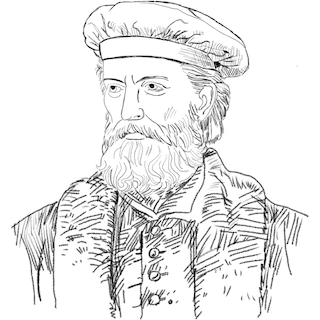On 5th October 2023, the literary world celebrated as the Nobel Prize in Literature was bestowed upon Jon Fosse, a revered Norwegian author. Fosse, a 64-year-old novelist, playwright, essayist, and poet, has been lauded for his groundbreaking plays and prose, and his unique ability to articulate the inexpressible. This recognition has elevated him to potentially become the world’s most prominent Norwegian writer of contemporary fiction, even surpassing his former student, Karl Ove Knausgård.
Born in Haugesund and raised in Strandebarm, Norway, Fosse's literary journey began in 1983 and has spanned three decades. His early life, marked by a Quaker and Pietist family background, a near-death experience, and a passion for rock music and writing, greatly influenced his literary style. Fosse studied comparative literature at the University of Bergen and began writing in Nynorsk, with his debut novel, Raudt, svart (Red, Black), published in 1983.
His works, translated into over forty languages, are renowned for their powerful themes, riveting narratives, and profound exploration of human experiences. Fosse's Septology I-VII, for example, delves into the existential crisis, memory loss, and the concept of doppelgangers through the character of Asle, an aging artist wrestling with time, art, and identity. His influences range from Samuel Beckett, Georg Trakl, Thomas Bernhard, to Olav H. Hauge, Franz Kafka, William Faulkner, Virginia Woolf, and the Bible.
Fosse's extensive body of work includes the 2023 novella, Aliss at the Fire, which paints a poignant picture of an elderly woman reminiscing about her husband lost to a storm, and The Boathouse, a 1989 publication that explores the life of a reclusive man who is confronted by his successful childhood friend. His 1999 play, Dream of Autumn, which premiered in English in Dublin in 2006, unravels themes of time, intergenerational circularity, and relationships.
Fosse's global recognition is evident in his ranking as number 83 on the list of the Top 100 living geniuses by The Daily Telegraph and his honorary residence at the Grotten, granted by the Norwegian state in 2011. His novel, A New Name: Septology VI-VII, made the shortlist for the International Booker Prize in April 2022, and was a finalist for the 2023 National Book Critics Circle Award in Fiction. Notably, Fosse became the first Nynorsk writer and the fourth Norwegian to receive the Nobel Prize in Literature.
Fosse's personal life has been as dynamic as his career, with three marriages and a son from his first marriage. Currently residing in Austria with his third wife, Fosse also owns homes in Bergen and other parts of western Norway. He joined the Catholic Church in 2012–2013 and underwent rehabilitation for alcohol consumption.
In summary, Jon Fosse's compelling narratives, profound exploration of human experiences, and innovative plays have earned him international acclaim and the esteemed Nobel Prize in Literature. His journey serves as an inspiration for aspiring writers and a testament to the transformative power of literature.
READ MORE
